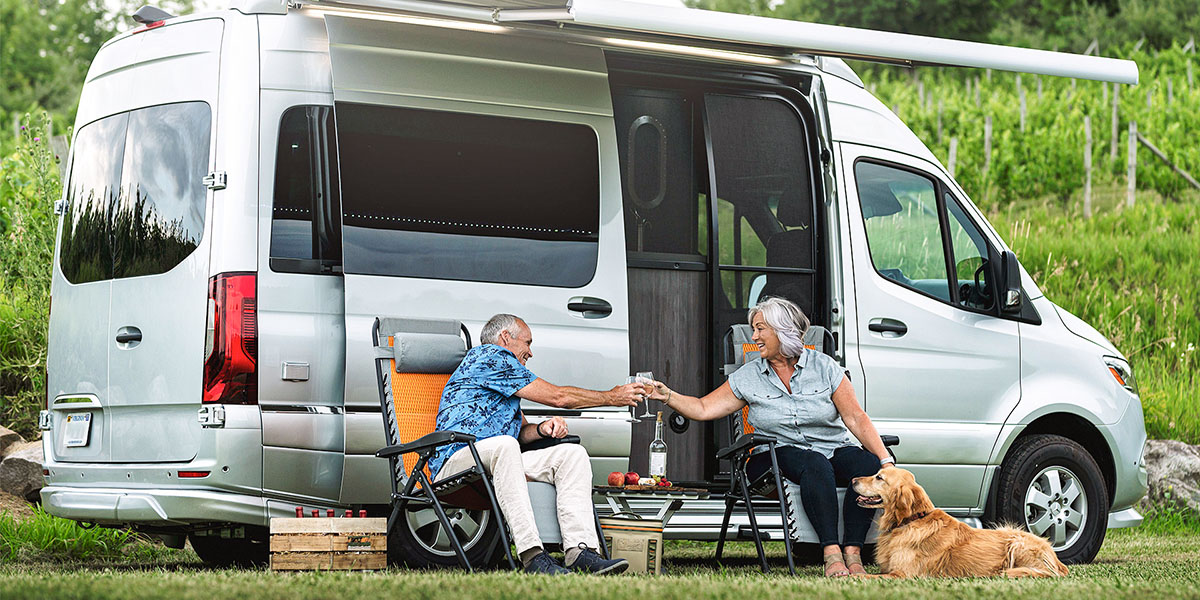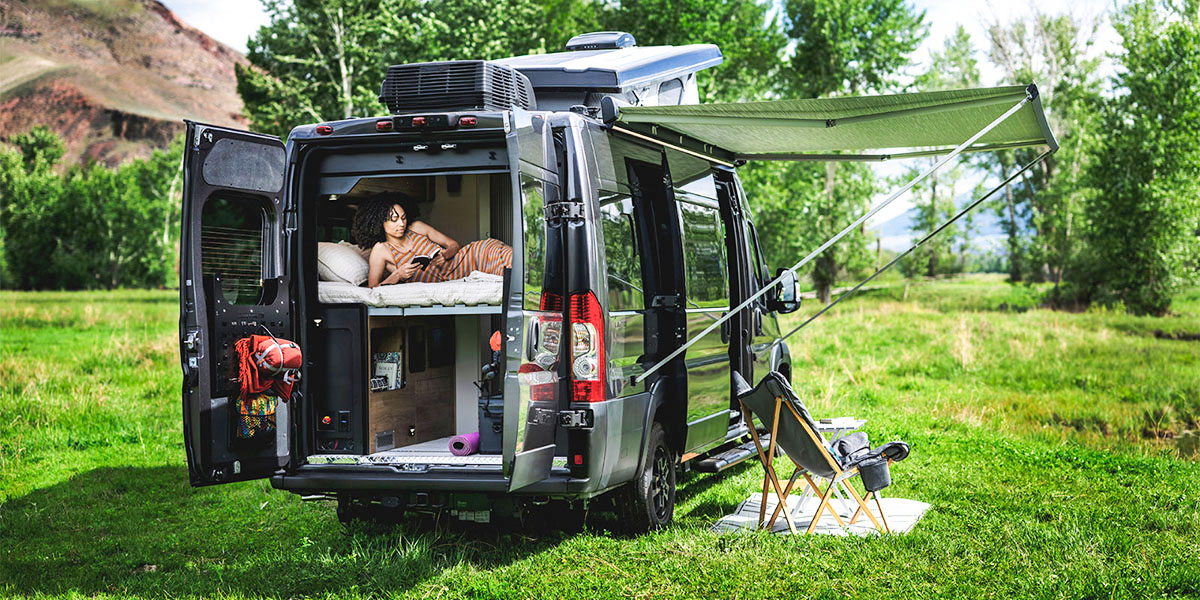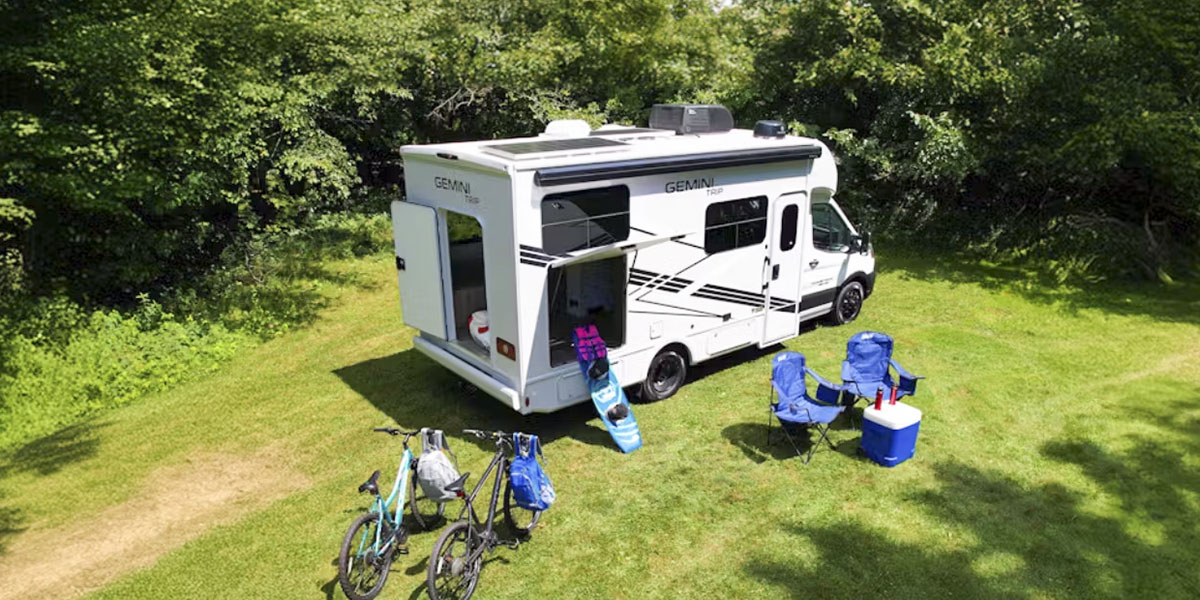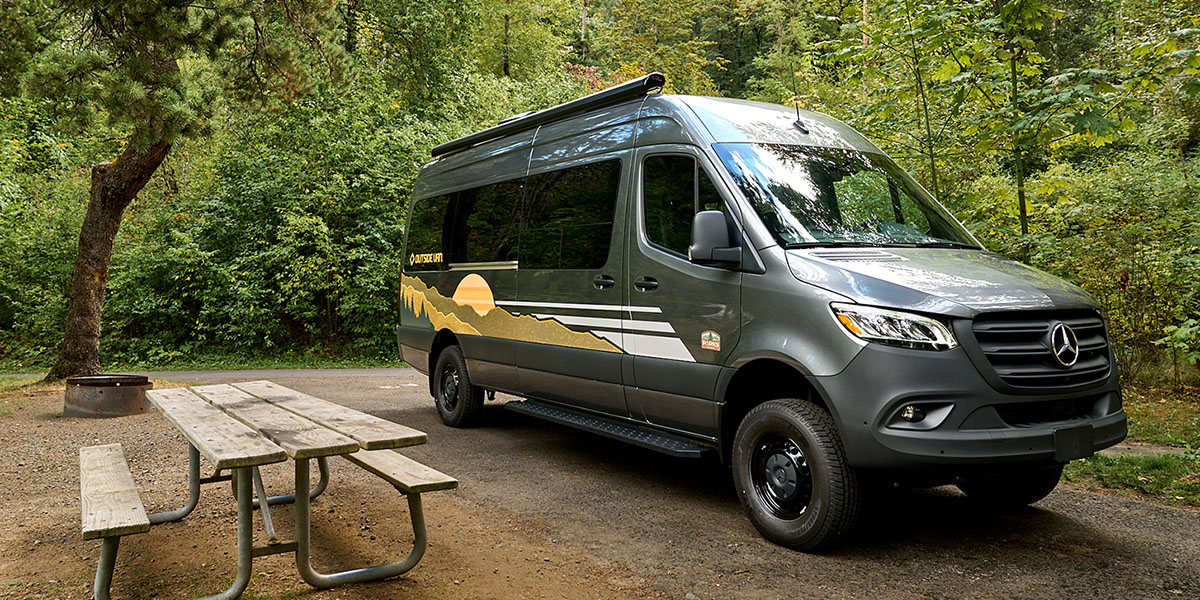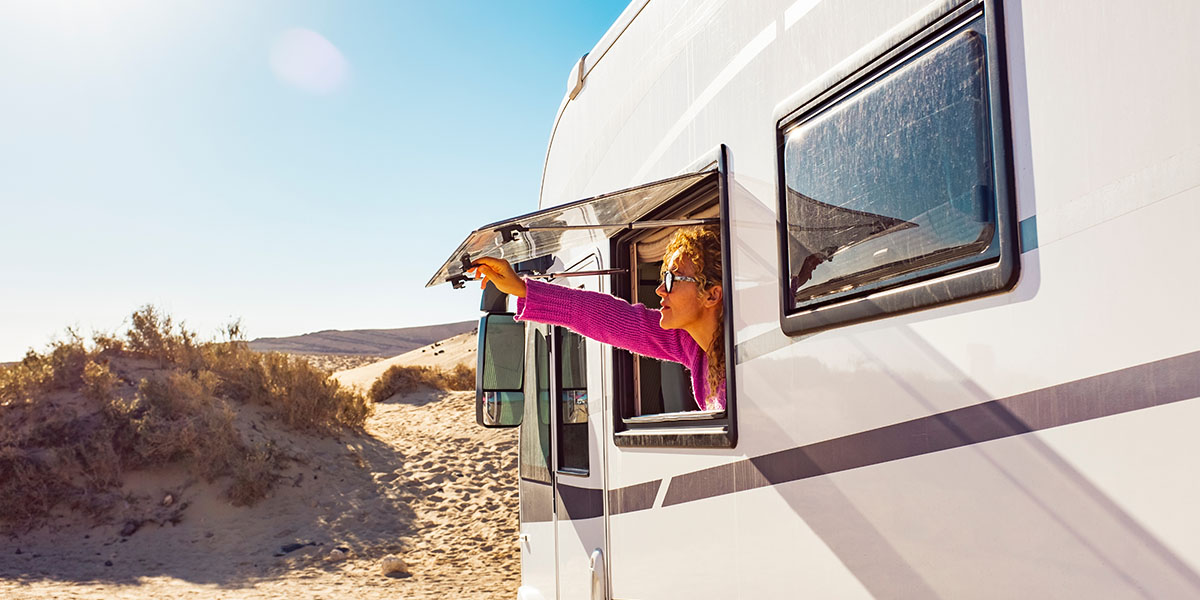What is the most fuel-efficient Class B RV you can buy? Is there a big difference in fuel mileage from one model to the next? This is RV Trader’s list of Class B RVs that will likely return the best fuel economy based on a few criteria from our own reviews.
Our Choice for Class B Mileage Champs
Mercedes-Benz Sprinter–Based Class B RVs
One of the reasons people like the Mercedes-Benz Sprinter chassis is the company’s turbocharged four-cylinder diesel engine. This driveline extracts some of the best mileage out of a drop of fuel yet still provides competent power and drivability. In addition, an RV builder can specify from a long list of safety and comfort options available on the Sprinter chassis.
Here are a few models available on the Sprinter chassis that are popular searches.
Airstream Interstate 19GT
Many builders of Class B RVs use the larger chassis with all-wheel drive; but if fuel mileage is your target, the Airstream Interstate 19GT uses the smaller 144-inch wheelbase chassis with two-wheel drive. The company does a good job of packaging this rig so it is a usable daily driver and also a functional camper. Airstream’s own estimated fuel mileage is about 16–18 miles per gallon – this is mostly a guess, although not unreasonable.
Entegra Coach Launch 19Y
We got to see the Entegra Coach Launch 19Y last year and liked the combination of cargo space and usable interior space, notably its rear cargo bay where the bed can lift up to maximize load space. Based on the Mercedes-Benz Sprinter all-wheel drive chassis, this Class B has a very well equipped cockpit with the tech and comfort features you would expect from the platform.
Winnebago Revel
The Winnebago Revel is a long-standing force in the Class B RV market. A variant introduced in 2024, the Revel Sport, is more affordable but still offers much of what the brand has built its reputation on, as well as some interesting floorplan options of its own.
Ram Promaster Chassis–Based Class B RVs
The Ram Promaster has become far less popular as a conversion only because the gasoline V6 and front-wheel drive powertrain limit the size of the RV you can build with this chassis. But these features also make for good handling and allow for more interior space.
Airstream Rangeline
The Rangeline is an affordable Airstream Class B van with a rear cargo area, but unique in that it’s available with a pop top for more sleeping capacity. While this option adds weight (and $11,900), it also provides a bed up top which is a fun place for your youthful travelers to lord over the campground.
Coachmen Pixel
I recently got to check out the Coachmen Pixel P 2.0M and found it to be one of my favorite Class B RVs that I have seen lately. It does a good job of balancing overall size with interior features and would make a great daily driver as well as weekend warrior. Definitely worth checking out.
Winnebago Solis Pocket
If a maneuverable Class B that gets decent mileage is a priority but you don’t want a diesel engine, the Winnebago Solis Pocket 36A might be just what you’re looking for. This small Class B camper van has a flexible, functional interior. However the 36A does not have a bathroom which might be great for some people, not for others.
No worries, though. There is also the Solis Pocket 36B which has less cargo carrying space but does have a pretty decent bathroom across the back of the van. At just 17 feet 10 inches in length, these diminutive vans can easily fit into a normal parking space.
Ford Transit–Based Class B RVs
While not truly a mileage champion, Ford’s Transit chassis still returns fair mileage while offering very good drivability. The fact that it’s a Ford and that parts may be readily available even in many small towns is a big plus if you need maintenance on the road.
Thor Motor Coach Palladium 1930
The Thor Motor Coach Palladium 1930 is one of my favorites. This Class B RV does feature all-wheel drive which will affect your fuel mileage but does have a very usable interior that would work on weekend adventures and weekday driving.
What Is Considered “Good” Fuel Economy?
If you’re buying a new passenger vehicle, a car, or SUV, you will likely see a window sticker that shows the estimated fuel mileage of that vehicle. This is mandated by the federal government and all passenger vehicles under 8,500 pounds GVW are subject to fuel consumption testing.
Heavier vehicles, like heavy-duty trucks and motorhomes, however, are not tested at all in this manner. Which is just as well, because real-world numbers can differ wildly where hauling and trailering is involved.
Based on input from readers and various forums, a very efficient Class B RV with a diesel engine can get up to 17–18 miles per gallon. An independent study of some Ram Promaster 1500 series vans showed that they averaged about 15 miles per gallon. Ford’s Transit vans weren’t far behind with about 14.5 miles per gallon in the same independent study.
My own 3/4-ton pickup with a large gasoline engine can also achieve those numbers if I’m not towing and I’m very easy on the throttle. But hang a trailer off the back of that beast and I’m averaging about 9 miles per gallon.
Generally speaking, the less weight and complexity you have in any vehicle, the better the mileage can be. So a two-wheel-drive Class B is likely to get better fuel mileage than the same model with four-wheel drive or all-wheel drive. The same goes for any additional equipment. So if fuel mileage is a priority these are things to consider.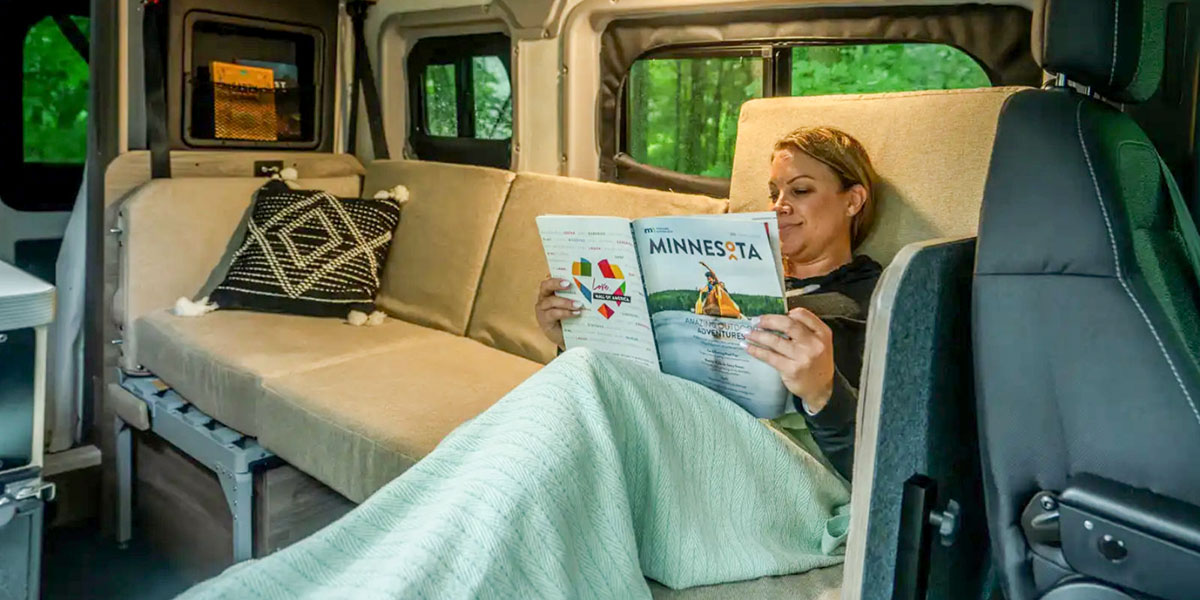
Gas or Diesel?
If you’re choosing a Class B RV and want the best fuel economy, diesel is the way to go. As it happens, the only diesel Class B chassis on the market is the Mercedes-Benz Sprinter, which uses a 2.0-liter four-cylinder turbocharged diesel engine. However, the fuel savings have to be balanced against the significantly greater cost of the diesel engine itself. Diesels are typically more efficient than gas engines; but in order to accommodate the forces they encounter, a diesel engine has a more robust construction, which is more expensive.
The most fuel-efficient gasoline-powered platform, in our experience, is the Ram Promaster chassis, which uses the Pentastar 3.6-liter gasoline V6. This chassis is unusual in that it’s front-wheel-drive; there are no driveline components under the back of the chassis which enables an RV builder to potentially build a smaller box while achieving comparable interior living space.
How to Unlock Better Fuel Mileage
There are two major factors that affect fuel mileage in any vehicle, but particularly an RV: speed and weight.
Check out the cars on the highway and you’ll notice that modern cars all kind of look the same. All those smooth curves and elongated shapes? They’re designed to cut through the wind and minimize air resistance, improving fuel economy. RVs, however, are the opposite of sleek – and the faster you go, the more fuel you need to burn to go the same distance.
The point of this is that the difference in fuel mileage between 60 mph and 80 mph is significant. You can get much better fuel mileage at lower highway speeds which is why the government mandated a 55 mph speed limit in the 1970s. Slowing down (within reason) can improve fuel mileage considerably.
Weight is absolutely a factor but more so in starting and climbing hills. Wind resistance is a big factor in cruising along the highway but a lighter vehicle will obviously get better fuel economy, especially when accelerating uphill or from a dead stop. This is why many people recommend traveling with empty holding tanks – water is heavy.
Bonus tip: Properly inflating your tires can significantly improve mileage – in addition to preventing dangerous blowouts, reducing wear on the tires, and lowering stress on the vehicle suspension. Many modern vehicles incorporate a tire pressure monitoring system. If your vehicle doesn’t have one, there are some very good choices on the market and these are a valuable investment to keep your rig running smoothly and your fuel costs low.
When it comes to choosing the most fuel-efficient Class B RV, the right option depends on your travel style, budget, and priorities. Lighter builds, two-wheel-drive setups, and moderate highway speeds generally return better mileage, while simple maintenance like proper tire pressure can make a surprising difference. Ultimately, the best RV for you is one that balances economy with comfort and supports the kind of adventures you want to take.
[marketplace_inventory_widget]
